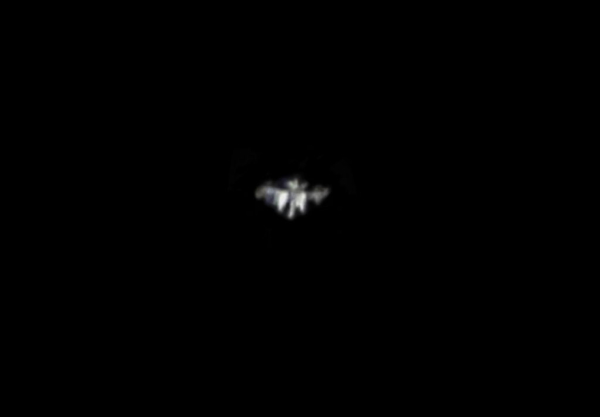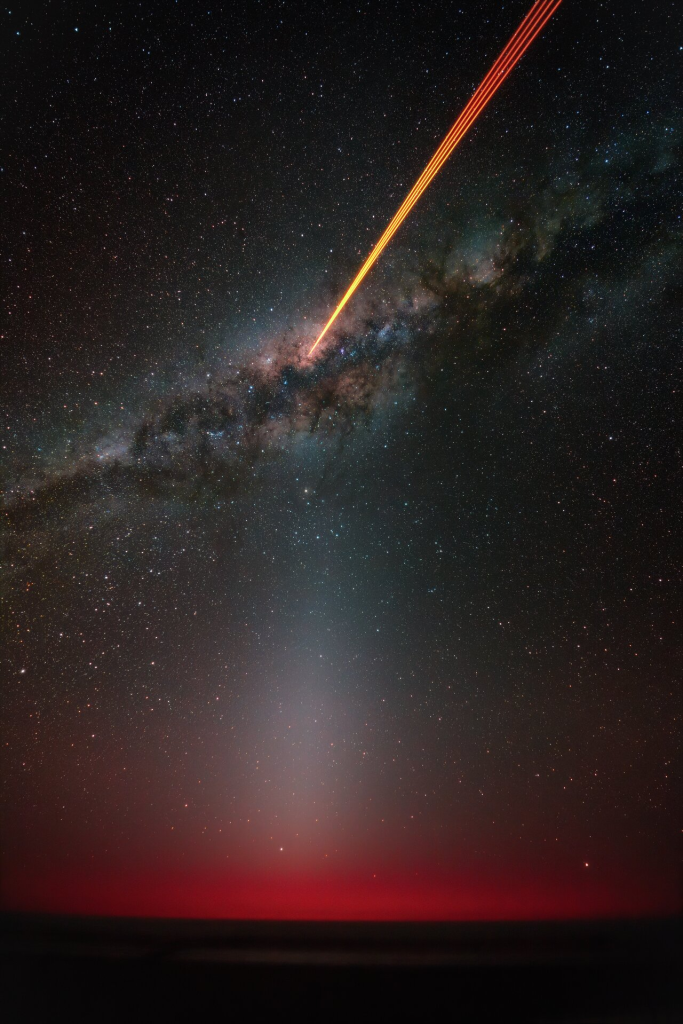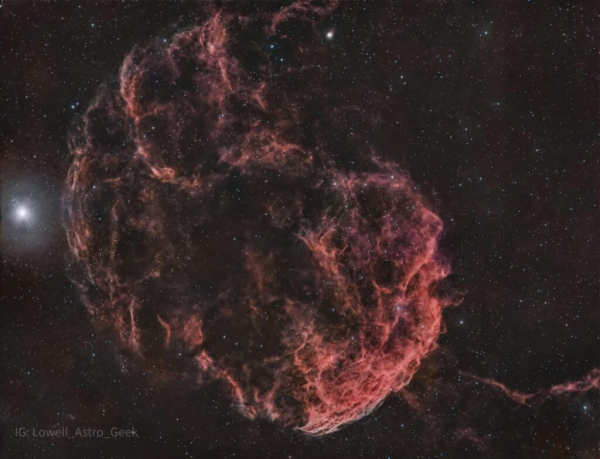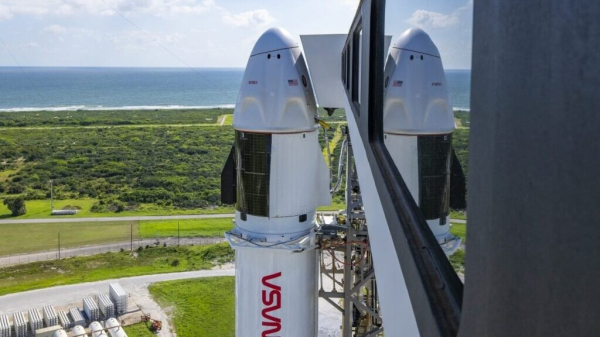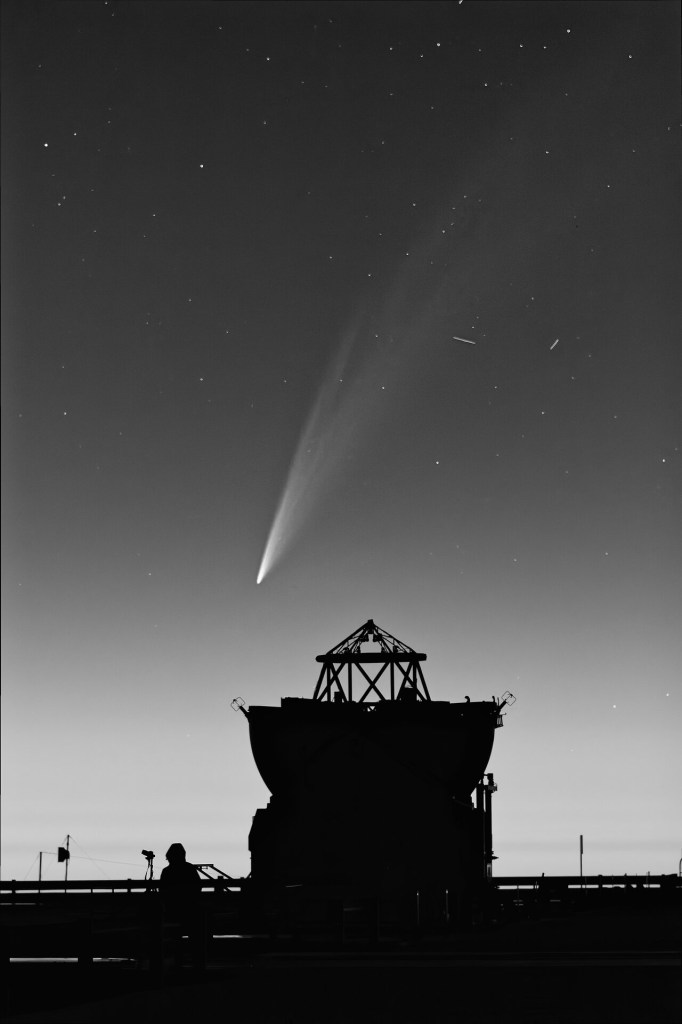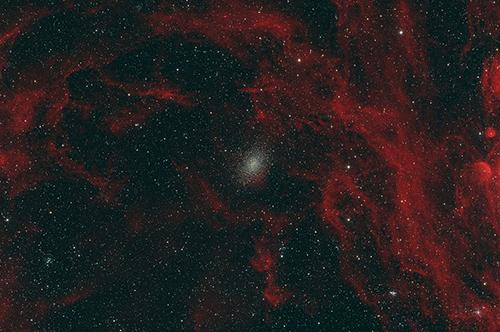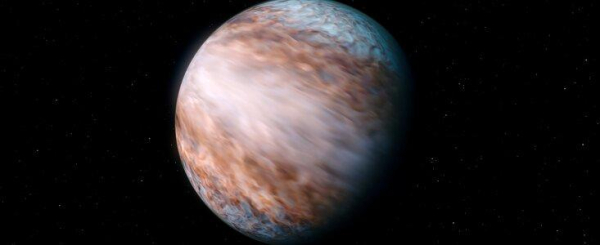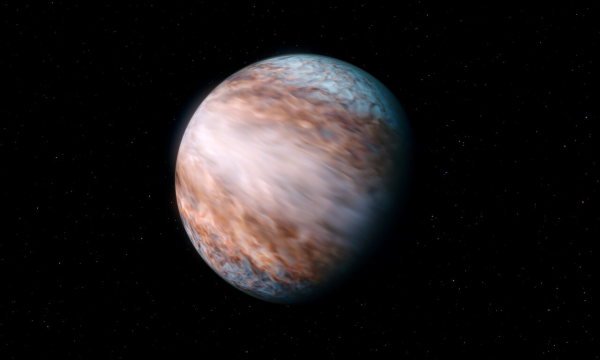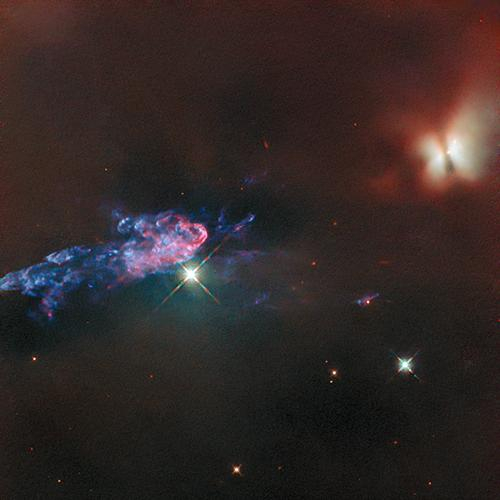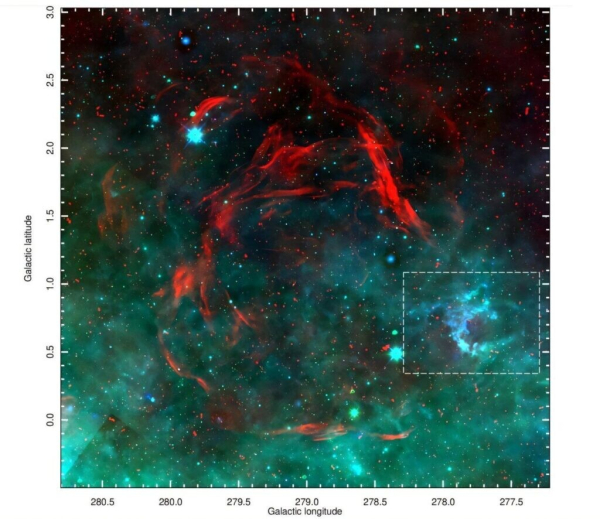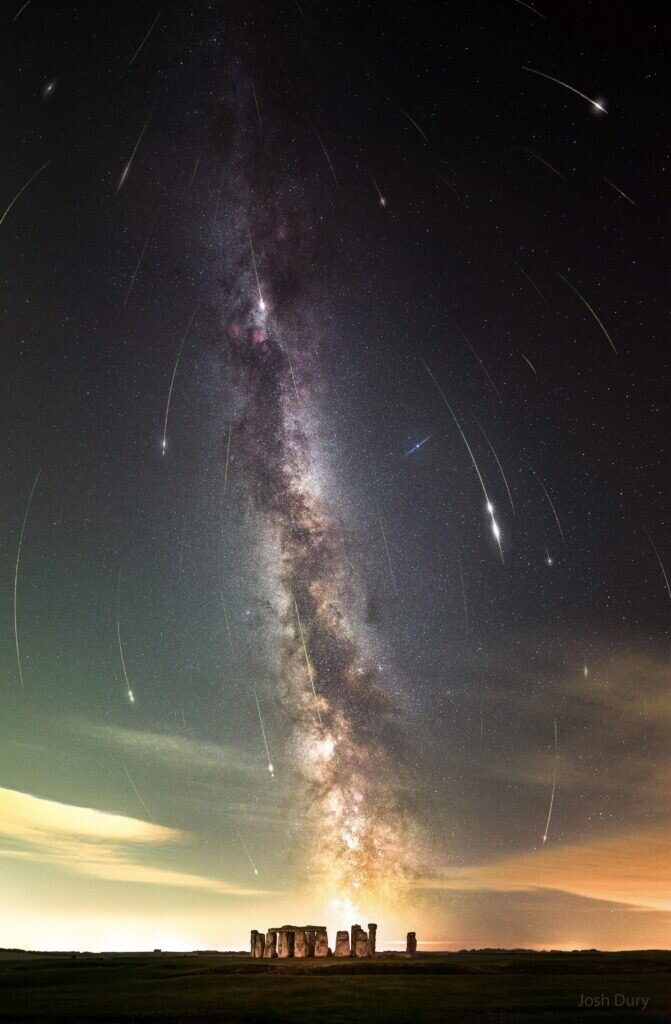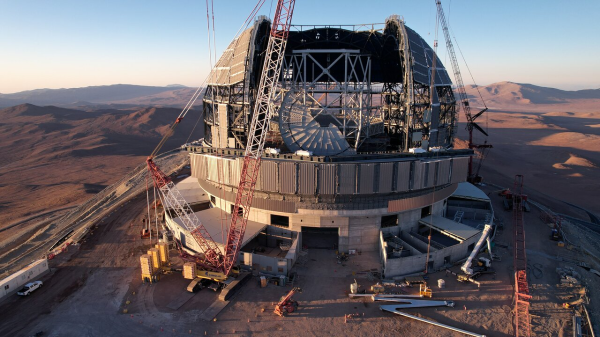Suche
Beiträge, die mit astrophysics getaggt sind
My sharpest yet view of the ISS
Just a few days ago the ISS was doing its closest past to my location I’ve ever seen, so I took my 114mm AZ newtonion spherical mirror reflector out, with a t ring adapter and a Canon 77d attached set to video mode, out into my backyard.BYTESEU (Bytes Europe)
#Astronomy #AstroPhysics #Cosmos #JWST #Science
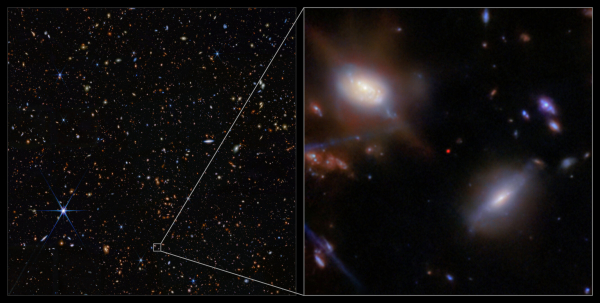
Webb sees galaxy mysteriously clearing fog of early Universe
Using the unique infrared sensitivity of the NASA/ESA/CSA James Webb Space Telescope, researchers can examine ancient galaxies to probe secrets of the early Universe.www.esa.int
That’s the zodiacal light: caused by dust grains in the Solar System, it's so faint that it’s only visible in the darkest skies, such as those of Chile’s Atacama Desert.
And the pristine night sky 🌌 in this region has always been intertwined with the culture and traditions of its indigenous people, discover how: https://www.eso.org/public/images/potw2511a/
📷 F. Millour/ESO
#astrodon #astronomy #astrophysics #space #science
Qualle Nebula, IC443
✨ Details ✨ Hauptseite: Insta: lowell_astro_geek Ziele: 🪼 Jellyfish Nebula, IC443 Scope: Erforschen Sie wissenschaftliche 127ED FCD-100 Focuser: Upgrade ES-Hex-Stil mit ZWO EAF-Kamera: Asiair 2600mc-pro Filter: 2 Filter: 2' Bergte, Atlina Tri-Band Mo…BYTESDE (Bytes Deutschland)
In this image, taken in early February, the planets of the Solar System appear to parade one after the other above our Paranal Observatory in #Chile. Joining the party are the #Moon, the #MilkyWay, and a special guest: comet C/2024 G3 ☄️
A question we often get is whether the planets orbit the Sun in the same plane as the disc of the Milky Way. This image shows that's not the case: the plane of the Solar System –the ecliptic– is tilted about 60º relative to the Milky Way.
Read more: https://www.eso.org/public/images/potw2510a/
📷 B.Haeussler/ESO
#astrodon #astronomy #astrophysics #astrophotography #space #science
#astrophysics https://www.youtube.com/watch?v=A3DaC0UMqUY
- YouTube
Auf YouTube findest du die angesagtesten Videos und Tracks. Außerdem kannst du eigene Inhalte hochladen und mit Freunden oder gleich der ganzen Welt teilen.www.youtube.com
New observations of 2024 YR4 conducted with ESO’s Very Large Telescope and facilities around the world have all but ruled out an impact of the #asteroid with our planet. The asteroid has been closely monitored in the past couple of months as its odds of impacting Earth in 2032 rose to around 3%, the highest impact probability ever reached for a sizable asteroid. After the latest observations, the odds of impact dropped to nearly zero.
Read more: https://www.eso.org/public/news/eso2505/
#astrodon #astronomy #astrophysics #space #science
#astrodon #astronomy #astrophysics #space #science
- YouTube
Auf YouTube findest du die angesagtesten Videos und Tracks. Außerdem kannst du eigene Inhalte hochladen und mit Freunden oder gleich der ganzen Welt teilen.www.youtube.com
Depuis cette #orbite, la sonde collectera de nouvelles données inédites qui permettront d'affiner notre compréhension de l'activité solaire. Info+ : https://www.esa.int/Enabling_Support/Operations/Solar_Orbiter_ready_for_close_encounter_with_Venus
#astrophysics #planetology #solarsystem
Solar Orbiter ready for close encounter with Venus
The European Space Agency (ESA) is ready to guide the ESA/NASA Solar Orbiter spacecraft through its closest encounter with Venus so far.www.esa.int
I'm just bouncing off Twitter, things are getting unbearable there. I haven't looked around here much yet. Can anyone tell me if there's anything on the free web that invites optimism in such bad times? @FediTips
Concern about SpaceX influence at NASA grows with new appointee. “Morale at the space agency is absurdly low, sources say.”
Concern about SpaceX influence at NASA grows with new appointee. 'Morale at the space agency is absurdly low, sources say.'https://arstechnica.com/space/2025/02/as-nasa-flies-into-turbulence-the-agency-could-use-a-steady-hand/BYTESEU (Bytes Europe)
Since you loved the images of #comet C/2024 G3 (ATLAS) that we shared recently, here are some more, taken from our Paranal Observatory in #Chile. This lovely #BlackAndWhite image was taken by our colleague Juan Beltrán, an engineer at Paranal.
➡️ https://www.eso.org/public/images/potw2505a/
📷 J. Beltrán/ESO
#astrodon #astronomy #astrophysics #astrophotography #space
https://www.youtube.com/watch?v=S84jjw__zlg
An international research team led by our Uni measured extreme winds on an exoplanet. Researchers were blown away to discover winds around 33,000 km/h: https://s.gwdg.de/5d5tE4, research: https://doi.org/n3g2 #Astronomy #Astrophysics
Information for the Media - Georg-August-Universität Göttingen
Webseiten der Georg-August-Universität GöttingenGeorg-August-Universität Göttingen - Öffentlichkeitsarbeit
https://www.universomagico.net/2025/01/ngc-1978-por-martin-pugh.html
Astronomer Martin Pugh's excellent image shows the globular cluster NGC 1978. It is located in the direction of the constellation Doradus and is found in the Large Magellanic Cloud, a companion galaxy to the Milky Way. It is located at a distance of 159,700 light years from Earth. Unlike.....
#astronomy #space #astrophysics #astrophotography
NGC 1978 por Martin Pugh
Jueves 23 de Enero de 2025 La excelente imagen del astrónomo Martin Pugh ...www.universomagico.net
The extreme meteorological conditions prevailing on the surface of WASP-127b were deduced from measurements made using the CRIRES+ instrument installed on the Very Large Telescope (VLT) of the @esoastronomy (ESO).
Details+ : https://www.irap.omp.eu/en/2025/01/extreme-supersonic-winds-measured-on-planet-outside-our-solar-system/
#astronomy #astrophysics #exoplanet
If you missed the news yesterday, here's a video recap of the latest discovery with our Very Large Telescope: https://www.youtube.com/watch?v=S84jjw__zlg
#astrodon #astronomy #astrophysics #space #science
- YouTube
Auf YouTube findest du die angesagtesten Videos und Tracks. Außerdem kannst du eigene Inhalte hochladen und mit Freunden oder gleich der ganzen Welt teilen.www.youtube.com
➡️ https://www.eso.org/public/news/eso2502/
Reaching speeds up to 33 000 km/h, the winds make up the fastest jetstream of its kind ever measured on a planet.
In comparison, the fastest wind ever measured in the Solar System was found on Neptune, moving at 1800 km/h.
How did they do it? Keep reading...
Artist's impression by ESO/L. Calçada
#astrodon #astronomy #astrophysics #space #science
https://www.universomagico.net/2025/01/hops-150-y-153.html
This Hubble Space Telescope image is a close-up of the dusty recesses of the closest massive star-forming region to Earth, the Orion Nebula Messier 42. Located just 1,300 light-years from the Solar System and facing the Orion constellation, it is visible to the naked eye beneath.....
#astronomy #space #astrophysics #astrophotography
HOPS 150 y 153
Domingo 19 de Enero de 2025 Esta imagen tomada por el Telescopio Espacial...www.universomagico.net
Astronomers find massive supernova remnant closer than previously thought
Astronomers find massive supernova remnant closer than previously thoughthttps://phys.org/news/2025-01-astronomers-massive-supernova-remnant-closer.htmlBYTESEU (Bytes Europe)
Perseid Meteors over Stonehenge – my favorite space related image of 2024. Image Credit: Josh Dury
Perseid Meteors over Stonehenge - my favorite space related image of 2024. Image Credit: Josh Dury https://i.redd.it/zczhcdbsls9e1.jpegBYTESEU (Bytes Europe)
One of them is our Extremely Large Telescope, currently under construction in #Chile. It will have a 39 m mirror, and its rotating enclosure will weigh 6100 tonnes, or about 700 mastodons!
We’re looking forward to chatting with all of you about #astronomy
📷 ESO/G. Vecchia
#astrodon #astrophysics #space #science

